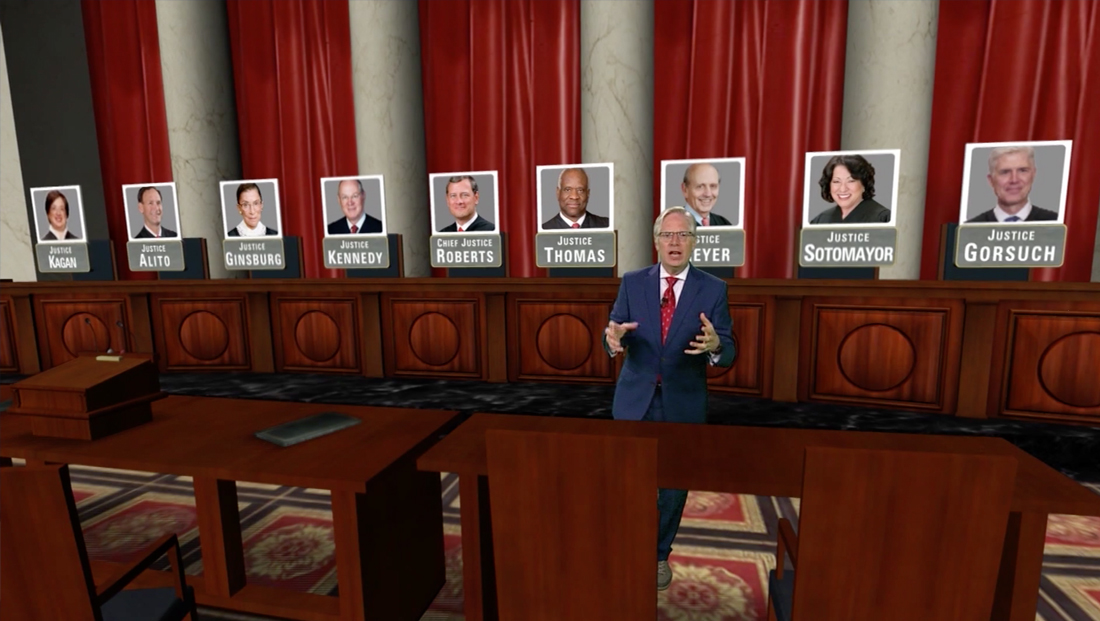CNN’s virtual SCOTUS analyzes justices’ ages, ideology

Subscribe to NCS for the latest news, project case studies and product announcements in broadcast technology, creative design and engineering delivered to your inbox.
According to Supreme Court tradition, justices are seated according to seniority, calculated based on when they were appointed and not age, with the exception of the chief justice, who is seated in the center.
The associate justices then sit on alternating sides, with the most senior associate on the chief’s immediate right, and the most junior associate seated on the left farthest away from the chief.
The result is a bit haphazard if you’re trying compare justices by age — which is why CNN then took some liberties with where each justice is “seated.”

Since the emphasis of the segment is the age of each justice and how his or her retirement might affect the makeup of the court, the segment then adds each justice’s age above his or her photo.
Since everything is computer generated, Foreman can sort justices on age, and not the SCOTUS’ tenure based seating arrangement.
Perhaps more notably, he can also sort them into groups based whether each was appointed by Republican and Democratic presidents using red and blue backgrounds, respectively.
Floating numbers are used to show calculations of the average age of the justice, including breakdowns based on the political party of the president who appointed them — and Foreman, thanks to TV magic, can “shuffle” the order the justices are displayed based on age with a wave of his hand.
U.S. Supreme Court justices are appointed for life, but can opt to resign or retire at any time. A death can obviously also result in a vacancy that needs to be filled, hence CNN’s emphasis on age.
Subscribe to NCS for the latest news, project case studies and product announcements in broadcast technology, creative design and engineering delivered to your inbox.




tags
CNN, SCOTUS, Supreme Court, tom foreman
categories
Augmented Reality, Virtual Production and Virtual Sets, Broadcast Design, Broadcast Industry News, Cable News, Heroes